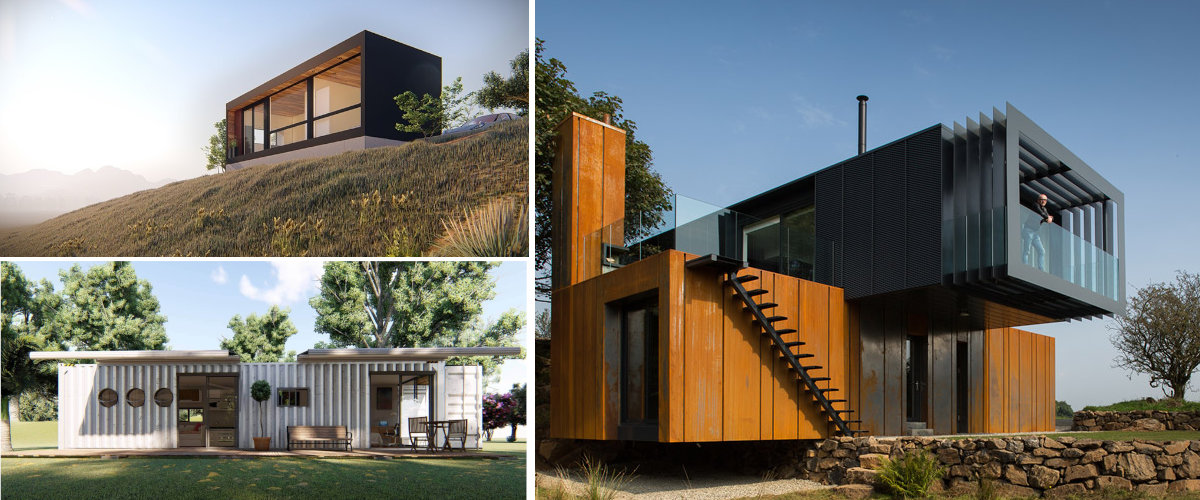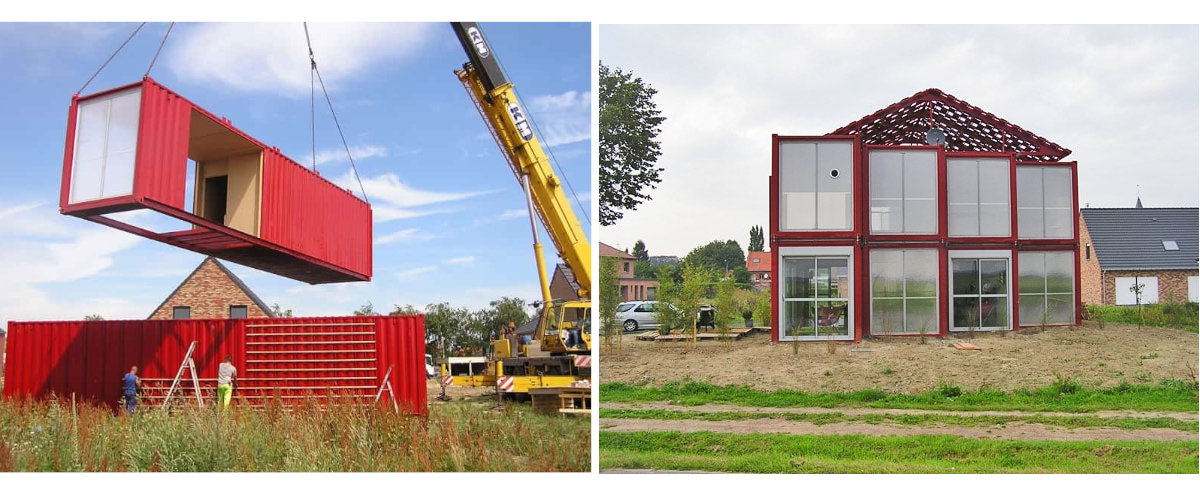
In times of crisis, alternatives to traditional models emerge out of necessity. Alternatives such as container houses, Prefabricated houses with maritime containers that not many years ago we would have rejected and that today are positioned as a viable alternative to traditional construction.
Maritime containers have standard dimensions, a limiting characteristic that forces us to play with shapes depending on both the size of the land and the needs of whoever is going to occupy it. By doing so, homes can be configured from 60 to 180 square meters, with two or three rooms, on the ground floor or ground floor and first floor. Thanks to your modular system, also relocating and expanding the home to adapt to family needs at all times will not be a problem.
Sea containers
Containers are designed to withstand heavy loads as well as inclement weather during sea transportation. Their usual load far exceeds the weight that can be given to a home, in addition to having an adequate human scale, so they become a valid alternative to create habitable spaces.

Sea containers are generally made of corrugated steel and have standard measurements that we wanted to share with you in the image above. Their height and length are key points in creating a living space, so 40-foot containers are the most used, and other smaller ones can be used for walkways, storage spaces or toilets.
Although the possibility of reuse used containers To reduce the environmental impact of construction it is very attractive, in some projects it will be necessary to use new containers. Why? Because when several heights are to be built, it is required that those of the main floor, those that will support the greatest load, be new.

Advantages of container houses
As you may have already deduced from the aforementioned characteristics, container houses have certain advantages compared to a traditional one such as manufacturing lead time, the environmental impact and the price. And although these are the most important, they are not the only ones:
- Adaptability. The construction with containers due to its characteristics is adaptable to any terrain.
- Flexibility. Container construction allows greater flexibility for future extensions. The structure can be modified and / or expanded at any time to add new container modules that adapt the home to new needs.
- Mobility. Containers have standardized measurements, so transport is relatively inexpensive. Container houses are made to be transported, so future relocation will not be a problem.
- Environment. The use of disused containers in this type of construction reduces their environmental footprint. It is necessary to bear in mind, however, that if we want to build a two-story house, the containers on the main floor will have to be new. Another environmental advantage has to do with the terrain; houses made with containers do not irreversibly alter the terrain on which they are located, unlike traditional houses.
- Durability. A container in good condition is robust, supports high loads and has great durability. It becomes an ideal structure to be used as a home as long as it meets all the requirements specified in the Technical Building Code.
- Quickly. A container house has a shorter construction time than a traditional house and similar to that of a prefabricated or modular house. The inclement weather does not influence its construction; the modules are prepared under cover and then moved to the field.
- Price. The price is lower than traditional houses. In fact, containers can be up to four times cheaper than a traditional construction.

Disadvantages of container houses
The advantages are numerous but we cannot ignore the disadvantages of container houses if we want to have a complete vision of them. They are not many, but they are important and can influence when making a decision:
- Limitations. The containers have standard measures and the architectural project must know how to adapt to these, which requires greater creativity. As the containers are narrow, the combination of several of them and the creation of different heights are the key to creating ideal spaces for a family.
- Adaptation. A significant economic investment is necessary in adapting used containers to their new use as housing.
- Maintenance. Although container houses are recognized for their low cost, they are expensively maintained and totally necessary to prevent container corrosion.

Are you determined to bet on a container house? Take a look at the projects of the different companies dedicated to this type of construction, compare budgets and solve all your doubts before opting for one. It will be an exciting project in which two jobs will be combined at the same time: those carried out on the plot (earthworks, foundations, conditioning, etc.) and the manufacture of the housing modules at the company's facilities. Everything to be able to deliver the house on time.